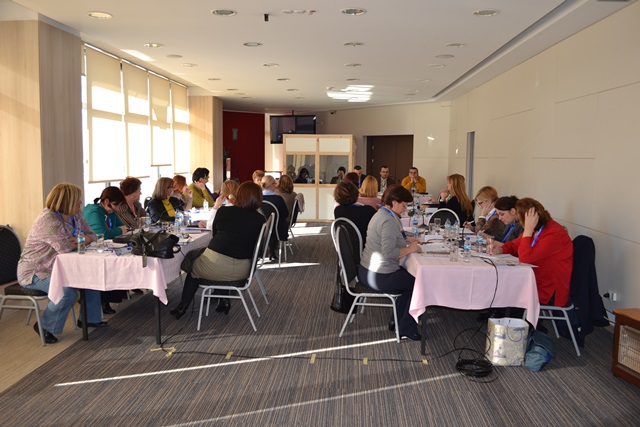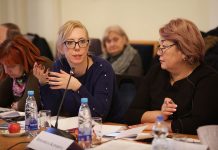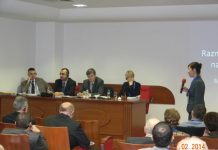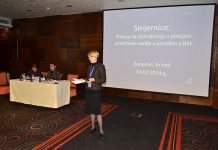On December 7 and 8, 2013, the fifth workshop of the Association of Women Judges in Bosnia and Herzegovina was organized by the Association, along with the Center for Security, Development and the Rule of Law (DCAF) and the Atlantic Initiative. Twenty-three Association members attended the workshop, which included presentations of the “Guidelines for Judicial Considerations in Domestic Violence Cases in BiH” and the results of research on “The Impact of Gender Impact on the BiH Judiciary.”
The goal of the workshop was to strengthen the Association’s professional capacities through training in domestic violence and gender issues. On the first day, Heather Huhtanen of DCAF and Judges Dragan Uletilović and Branimir Maletić presented the “Guidelines for Judicial Considerations in Domestic Violence Cases in BiH,” based on materials developed by nine judges from across Bosnia and Herzegovina. It is particularly important to emphasize the practical significance of the Guidelines for case law in BiH, and this was stressed in the workshop through real-world examples, group work, and exercises.
On the second day, Majda Halilović of the Atlantic Initiative presented the results of research on “The Impact of Gender on the BiH Judiciary.” The results, statistical indicators, and examples from the daily practice of judges, prosecutors, and lawyers illustrate the role of gender in court procedures and relations within the judiciary. During the discussion and case scenario analyses, workshop participants confirmed that the sex of defendants, judges, prosecutors, and lawyers, or perceptions of gender roles, may indeed influence judicial processes.
Evaluation forms completed by workshop participants gave extremely positive feedback. Participants indicated that the workshop improved their knowledge about the issues of domestic violence and the impact of gender on the judiciary. They agreed that the workshop was relevant for their future work, and that it supported cooperation with other stakeholders and the strengthening of the Association’s capacities.








